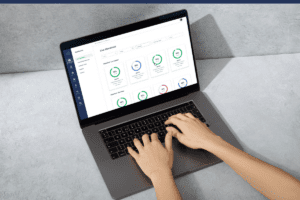How Career Institute Accreditors Interpret New Department of Education Distance Learning Requirements
The Department of Education provided new regulations surrounding distance learning, but many vocational school and career institute accreditors have deeper requirements for distance and blended learning programs.
New regulations from the Department of Education went into place on July 1 for schools wishing to continue distance learning programs moving forward.
While ED offered an overview of distance learning requirements, some accreditors have more in-depth requirements for career institutions. Read on to find out if your accreditor has additional regulatory requirements outside of new ED rules.
Accreditor requirements for the updated definition of clock hours
The updated definition of clock hours, 50 minutes of instruction during a 60 minute period, is standard for many accreditors. However, some accreditors differ in what constitutes a distance learning clock hour. ED includes “An asynchronous learning activity involving academic engagement in which the student interacts with technology that can monitor and document the amount of time that the student participates in the activity” in its definition of clock hours, but some accreditors have a more narrow definition:
- NACCAS defined a distance education clock hour as “a class lecture or recitation where there is opportunity for direct interaction between the instructor and students.” Asynchronous activities, like a video or reading assignment, may not be compliant with NACCAS standards.
When building your career institute’s distance or blended learning program, check with your accreditor to determine whether they allow for asynchronous instruction under the definition of a clock hour.
Accreditor requirements for distance learning vs. correspondence courses
Like the ED requirements, many accreditors define distance education programs as education that uses technology to deliver instruction to students who are separated from the instructor while supporting regular and substantive interaction between the instructor and students. Some accreditors who accredit distance learning programs will not accredit correspondence courses, so it’s important to ensure your school is offering and documenting regular and substantive interaction.
- NACCAS says that the interaction must be verifiable and measurable, whether clock hour, credit hour or competency-based.
- DEAC notes the importance of documenting how “how instructional and non-instructional staff regularly engage in monitoring student progress through and completion of educational offerings.”
While the new ED regulations guide both distance and blended learning, some accreditors do not offer accreditation for full distance learning programs, only blended learning courses:
- NACCAS’s accreditation manual says that distance education cannot be used as a mode of delivery for more than 50% of any program.
- COE defines a distance education program as a program that offers 50% or more of its instructional hours via distance education. A distance education student is a student who completes 50% or more of their required instructional hours via distance education.
When designing your blended learning program, check your accreditor’s handbook to ensure that you’re not exceeding a predetermined threshold of online time.
Accreditor requirements for regular and substantive education
Many accreditors do not directly define regular and substantive education and follow the new definition of regular and substantive interaction as defined by ED. Those who do not have other descriptive policies in place that have a similar meaning to regular and substantive education:
- DEAC’s impact statement, for example, says that “appropriately qualified instructors or faculty members assure that prompt responses to questions and submissions are returned to students.” This statement follows similar thinking in the definition of regular interaction, “ensuring that an instructor is responsible for promptly and proactively engaging in substantive interaction with the student when needed on the basis of such monitoring, or upon request by the student.”
One key piece of interaction from DEAC that the ED does not outline in its definition of regular and substantive interaction is that institutions must use “appropriate and readily accessible technology to optimize interaction between the institution and the student.” As education technology evolves, career institutions should regularly audit their technology to optimize student and instructor distance learning programs.
Accreditor requirements for academic engagement
Accreditors typically follow the ED definition of academic engagement and provide few guidelines around academic engagement. They provide more guidance around satisfactory academic progress in distance learning courses and may have specific requirements to determine SAP in distance learning programs.
- NACCAS, for example, requires that schools include a monthly on-campus assessment of student performance in distance education policies.
- COE requires that career institutions monitor student progress in distance activities, including log-in time, confirmation of student time online, and the percentage of completed coursework.
Additional considerations for distance learning accreditation
Many accreditors have additional regulations outside of the ED, so check with your accreditors when designing your distance or blended learning programs.
Some common requirements across accreditors that are not addressed in the new July 1 regulations are:
- Career institutes must have a distance education specialist in place to manage distance learning programs.
- Career institutes must conduct distance education assessments or prove satisfactory academic progress through other methods.
- Career institutes must disclose that the program is a blended/distance program and disclose the technology requirements for the program.
If you’d like to learn more about how CourseKey is helping campuses optimize their distance learning to be compliant, efficient, and effective, request a demo today.
Recent Articles

















